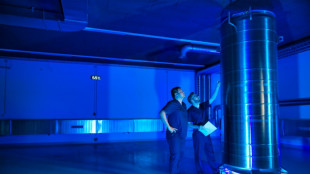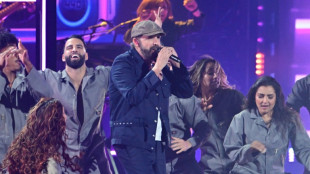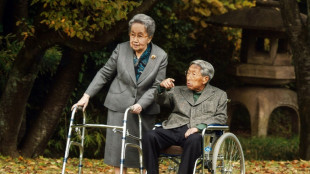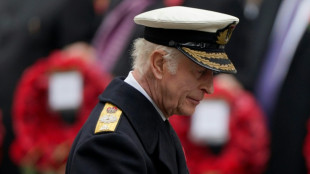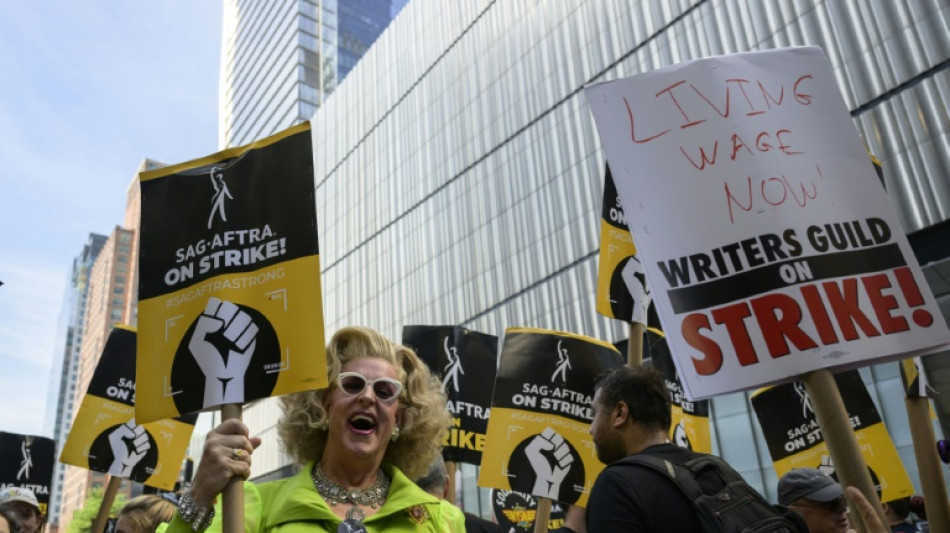

In the shadow of Hollywood's strikes, beauty professionals suffer
Professional hairdressers and makeup artists work in the shadows of celebrities to make them sparkle on sets, red carpets and magazine covers.
But from New York to Los Angeles, the historic strike of American screenwriters and actors is leaving the workers responsible for making up the stars with blank appointment books and empty savings accounts.
Matthew Monzon, 52, has been a celebrity hairdresser in New York since 1997, coiffing the likes of Julia Louis-Dreyfus, Brooke Shields, Keri Russell and Anna Kendrick.
But since the screenwriters, and even more notably the actors, have stopped work -- part of collective bargaining efforts to obtain fair pay from studios as well as curbs on the use of AI -- Monzon says "finances are dwindling."
So far he told AFP he's been able to cover his rent and health insurance payments, but that "there are very small amounts in my bank account at this point."
But he supports the movement: "I want the actors and the writers to get what they deserve."
From costume designers to makeup artists, manicurists to stylists to hairdressers -- the impact of the strikes has rippled across the entire entertainment ecosystem that depends on a packed Hollywood calendar.
Negotiations between studio bosses and screenwriters resumed this week, but talks are slow.
For Rebecca Restrepo, that's left daily life at a standstill.
She used to lug 60-pound suitcases of makeup and lighting, dashing between TV studios and hotels.
But she says since July, things have dried up: "Zero work."
"Right now, I have a personal client, she's a billionaire. But they only need make up once in a blue moon," said the resident of Queens.
Restrepo said her industry is feeling the hit even more intensely because the pandemic meant "a year-and-a-half without work."
"And now with this strike, you know we were all just trying to make day to day and now, it's killing all of us."
- 'The Wild West' -
Most beauty professionals work independently with the help of an agency, which maintains their client list and portfolio along with organizing their schedule.
Many of these artists worked in fashion before moving into the world of Hollywood and celebrities into the 2000s.
They describe their work as an art that adapts to circumstance: "A premiere, it's super glamorous; an evening talk show, it's a little more chic, more cocktail; a morning talk show, you want to keep it fresh and natural," Restrepo explained.
But today, they describe an increasingly competitive field, arduous working conditions and uncertainty about the profession's future.
"Because of Instagram, everyone has a filter, everyone's a retoucher, everyone thinks they're a makeup artist," said Restrepo.
"It's like the Wild West."
Matin Maulawizada has been a makeup artist established in New York for 26 years, and has worked on stars including Angelina Jolie and Claire Danes.
He said pay rates have been cut to a tenth of what productions used to give prior to the advent of streaming platforms.
At 59, Maulawizada is hoping to join the Make-Up Artists & Hair Stylists Guild for New York's audiovisual and theater industries of New York, in order to benefit from standards negotiated with production studios or Broadway theaters.
He also launched an Instagram initiative called the "beauty4beautyproject" to support professionals like him, who are impacted by the strikes.
Marco Santini, who does hair for Jessica Chastain, Lucy Liu and Uma Thurman, is more disillusioned.
He's convinced artificial intelligence will pound the final nail in the coffin of his profession: "When you have an avatar, you don't need a hairdresser."
A.Navarro--ESF

